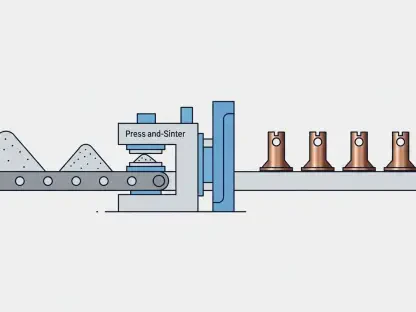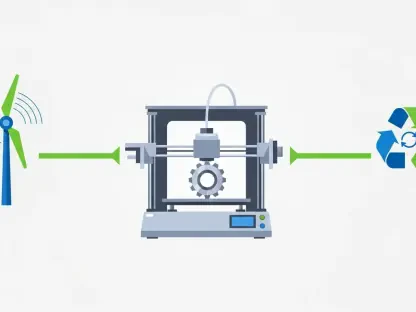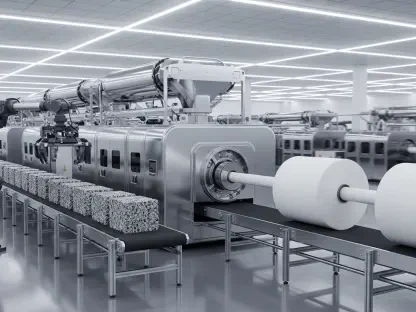The pharmaceutical industry is reeling from the announcement of a new US-EU trade agreement that imposes a 15% tariff on European drugs imported into the United States, marking a seismic shift in transatlantic trade relations and raising concerns about cost increases. Unveiled over the weekend, this deal is positioned by European Commission President Ursula von der Leyen as a step toward economic stability amid global uncertainties. However, targeting pharmaceuticals—a sector worth $120 billion in annual EU exports to the US—has ignited a firestorm of debate. While a select group of generic drugs escapes under a “zero-for-zero” arrangement, most branded medications face this new levy, shattering decades of duty-free trade under prior agreements and World Trade Organization guidelines. The potential for cost increases and supply chain disruptions looms large, with implications that could extend to patient access to critical treatments. As industry stakeholders, analysts, and policymakers grapple with the fallout, the coming months will test the balance between economic policy and public health priorities.
Economic Implications of the Tariff
Industry-Wide Financial Burden
Wall Street analysts have sounded the alarm on the financial toll of the 15% tariff, projecting an annual cost to the biopharma sector ranging from $13 billion to $19 billion, a staggering figure that underscores the scale of this policy shift. ING analyst Diederik Stadig estimates the lower end at $13 billion if no mitigation occurs, while Bernstein’s Courtney Breen warns of a heftier $19 billion hit, though she notes that strategies like stockpiling could lessen the impact. Jefferies offers a more tempered view, suggesting that for firms with significant US manufacturing, the tariff’s impact might be “less severe” than anticipated. This variability in forecasts reflects differing assumptions about how companies will adapt, but the consensus remains clear: the industry faces a substantial new expense. For American healthcare systems, the ripple effect could mean higher drug prices, a concern that analysts are closely monitoring as implementation details unfold.
Beyond the raw numbers, the tariff’s financial burden raises questions about long-term investment in the pharmaceutical sector, particularly for companies caught between rising costs and the need to maintain competitive pricing. The potential for reduced profit margins could deter innovation, as firms may redirect funds from research and development to offset tariff-related expenses. Jefferies analysts point out that larger biotech companies with domestic production capabilities are better positioned to absorb the shock, potentially widening the gap between industry giants and smaller players reliant on European imports. Meanwhile, the unpredictability of how costs will be passed along—whether absorbed by manufacturers or shifted to consumers—adds another layer of complexity. As the sector braces for these economic headwinds, strategic planning around production and inventory will likely become a critical focus for minimizing financial disruption.
Cost Structure and Implementation Nuances
Delving into the mechanics of the tariff, a key concern is its application to transfer prices rather than the cost of goods sold, a distinction that could significantly inflate the financial impact for European manufacturers exporting to the US. Transfer prices, often higher than production costs due to internal accounting practices, mean that a 15% levy could translate into a steeper effective burden for companies with substantial EU-based operations. This nuance has sparked worry among industry watchers, as it may disproportionately affect firms with complex cross-border supply chains. The lack of definitive guidance on how this calculation will be enforced only heightens the uncertainty, leaving corporations scrambling to model potential scenarios and adjust pricing strategies accordingly. Until clearer rules emerge, the true cost of compliance remains a moving target.
Compounding the issue is the unresolved status of the US Department of Commerce’s Section 232 investigation, which is evaluating whether pharmaceutical tariffs align with national goals of boosting domestic production. The outcome of this probe will determine the final scope and enforcement of the 15% rate, with a cap ensuring it does not exceed this threshold providing some predictability. However, the timeline for a decision remains unclear, keeping the industry in a state of limbo as companies weigh whether to preemptively shift operations or wait for regulatory clarity. This uncertainty affects not just financial planning but also long-term decisions about where to locate manufacturing facilities. For many stakeholders, the wait-and-see approach is a risky necessity, as premature moves could prove costly if the tariff’s implementation is altered or delayed by the investigation’s findings.
Corporate and Regional Impacts
European Concerns and Reactions
Across the Atlantic, European industry bodies have reacted with alarm to the 15% tariff, warning of dire consequences for pharmaceutical supply chains and patient care. Germany’s Association of Research-Based Pharmaceutical Companies has labeled the impact as “drastic,” emphasizing that cost increases could strain manufacturers already grappling with tight margins. As the EU’s largest exporter of pharmaceuticals to the US, Germany faces outsized exposure, with ripple effects likely to hit smaller member states as well. The fear is that added costs will not only burden companies but also disrupt the steady flow of medicines, potentially creating shortages or delays in a sector where timing is critical. European stakeholders are urging policymakers to reconsider the tariff’s scope, arguing that alternative measures could achieve trade balance without jeopardizing health outcomes.
The European Federation of Pharmaceutical Industries and Associations (EFPIA) has echoed these concerns, with Director General Nathalie Moll criticizing tariffs as a “blunt instrument” ill-suited to the complexities of the biopharma industry. Moll argues that such levies risk curbing investment in research and development, a cornerstone of medical advancement, while also threatening patient access to cutting-edge treatments on both continents. EFPIA is pushing for dialogue on solutions that prioritize innovation and equitable trade over punitive measures, highlighting the need for a global framework to share the costs of pharmaceutical progress. The stark warnings from European voices contrast with more measured US perspectives, underscoring a transatlantic divide in how the tariff’s consequences are perceived. As negotiations continue, the pressure is mounting for a resolution that mitigates these widespread risks.
US Corporate Strategies
On the US side, major pharmaceutical companies are adopting a range of strategies to navigate the 15% tariff, with some expressing cautious confidence in their ability to weather the storm. Merck’s CEO Robert Davis, speaking during a recent earnings call, downplayed the potential impact, citing robust inventory management and a strategic pivot toward US-based manufacturing as key buffers. This approach reflects a broader trend among large biopharma firms to localize production, reducing reliance on imported goods subject to the new levy. For companies like Merck, such preemptive measures could mean the difference between a manageable cost increase and a significant financial setback. However, not all firms are equally prepared, and the disparity in readiness highlights the uneven playing field created by the tariff’s introduction.
In contrast, companies like Amgen and Biogen, with significant manufacturing footprints in Europe, face more immediate challenges, though recent investments in US facilities offer some relief. Amgen, operating plants in Ireland and the Netherlands, could see a single-digit hit to earnings per share, assuming a portion of its US sales remains tied to European production. Yet, its $2 billion commitment to new facilities in Ohio and North Carolina signals a proactive shift toward domestic capacity. Biogen, similarly, benefits from operations in North Carolina and ongoing efforts to localize production of key drugs like Leqembi, though it still anticipates a minor earnings impact. Analysts at Jefferies note that such strategic adjustments are critical for mitigating exposure, but they also caution that firms with slower transitions may struggle. The varying degrees of vulnerability among US companies underscore the importance of agility in responding to evolving trade policies.
Broader Trends in Pharma Trade
Transatlantic Trade Dynamics
The imposition of a 15% tariff marks a stark departure from the long-standing duty-free trade in pharmaceuticals between the US and EU, a norm upheld by bilateral agreements and World Trade Organization principles for decades. This shift has exposed a rift in transatlantic perspectives, with European industry groups warning of catastrophic disruptions to supply chains and innovation funding, while US-based firms and analysts often project a more manageable outcome through tactical adjustments. The move away from open trade reflects a broader push toward protectionism, driven by goals of economic self-reliance that prioritize domestic industries over global cooperation. As this policy takes shape, the historical harmony of pharmaceutical exchange faces an unprecedented test, with potential long-term consequences for how medical goods are produced and distributed across borders.
This divergence in outlook also highlights differing national priorities, as the US seeks to bolster its manufacturing base while the EU grapples with defending a major export sector. European stakeholders argue that the tariff undermines the collaborative spirit that has fueled medical breakthroughs, potentially fragmenting a once-unified market for life-saving drugs. Meanwhile, some US analysts suggest that the capped 15% rate offers a degree of certainty, allowing companies to plan around a known cost rather than face escalating trade barriers. The tension between these views illustrates the complexity of reshaping trade norms in a sector as vital as pharmaceuticals. As both sides navigate this uncharted territory, the risk of retaliatory measures or further trade restrictions looms, threatening to deepen the divide unless diplomatic efforts can bridge the gap.
Policy and Patient Access Concerns
At the heart of the debate over the 15% tariff lies a critical tension between economic policy objectives and the imperative to ensure affordable, accessible medicines for patients across the Atlantic. The potential for cost increases to trickle down to consumers raises alarms among healthcare advocates, who fear that higher drug prices could limit access to essential treatments, particularly for chronic or rare conditions. In the US, where drug pricing is already a contentious issue, any additional burden could intensify public and political scrutiny of the pharmaceutical industry. The challenge for policymakers is to balance the drive for domestic economic gains with the fundamental need to protect public health, a delicate equation that remains unresolved as the tariff’s full effects are yet to be seen.
Equally pressing is the impact on global health equity, as disruptions to supply chains could disproportionately affect vulnerable populations reliant on imported medications. European critics of the tariff argue that patient care should not be collateral damage in trade disputes, urging a reevaluation of policies that might jeopardize the availability of cutting-edge therapies. In the US, the Department of Commerce’s ongoing investigation into pharmaceutical imports adds another layer of uncertainty, as its findings could either reinforce or reshape the current tariff framework. As discussions continue, the industry and regulators must prioritize mechanisms—such as targeted exemptions or subsidies—that safeguard access while addressing economic goals. The path forward demands a nuanced approach, ensuring that the pursuit of trade balance does not come at the expense of those who depend on a steady flow of vital drugs.
Navigating Future Trade Challenges
Reflecting on a Pivotal Policy Shift
Looking back, the introduction of a 15% tariff on EU pharmaceuticals imported to the US stood as a defining moment in transatlantic trade, sparking intense debate over its economic and health implications. Industry stakeholders, from European associations to US corporations, grappled with projected costs ranging from $13 billion to $19 billion annually, while strategizing to mitigate the impact through domestic production and inventory adjustments. The stark contrast between European warnings of supply chain collapse and the more measured US optimism revealed deep-seated differences in perspective. Meanwhile, the unresolved Commerce Department investigation kept the sector in suspense, as final implementation details remained elusive. This policy reshaped the dialogue around global pharmaceutical trade, forcing a reckoning with the balance between national interests and international collaboration.
Charting a Path Forward
Moving ahead, the focus must shift to actionable solutions that address the tariff’s fallout while preserving patient access to essential medicines. Policymakers on both sides of the Atlantic should explore targeted exemptions for critical drugs and incentivize joint ventures that bolster innovation without punitive costs. Industry leaders are encouraged to accelerate investments in localized manufacturing, reducing vulnerability to future trade barriers. Additionally, transparent communication from regulatory bodies about investigation outcomes and tariff enforcement will be crucial for planning. Collaborative frameworks, perhaps through updated trade agreements, could help restore stability and ensure that economic policies do not undermine health priorities. As the pharmaceutical landscape continues to evolve, proactive dialogue and strategic adaptation will be key to navigating the challenges posed by this transformative trade measure.









